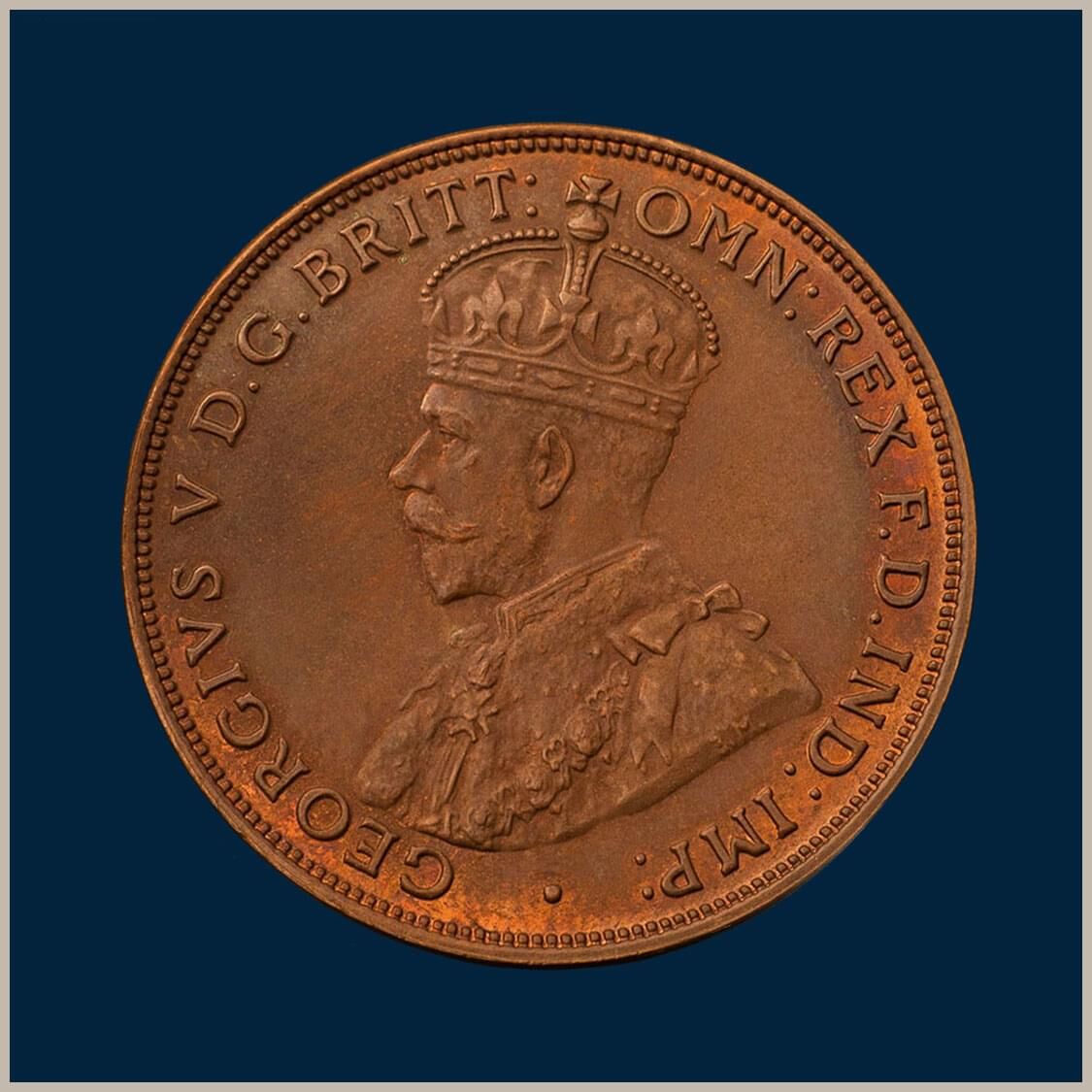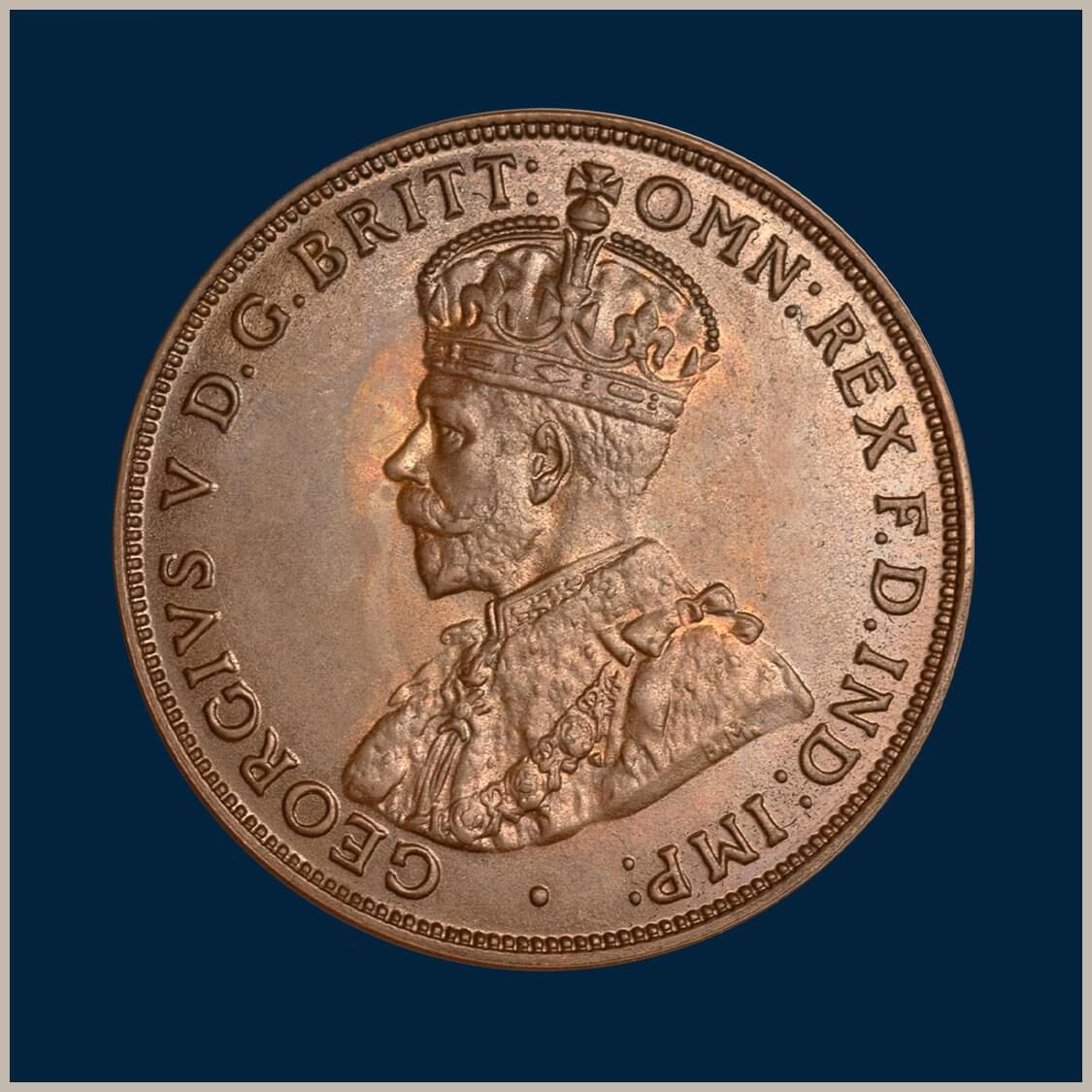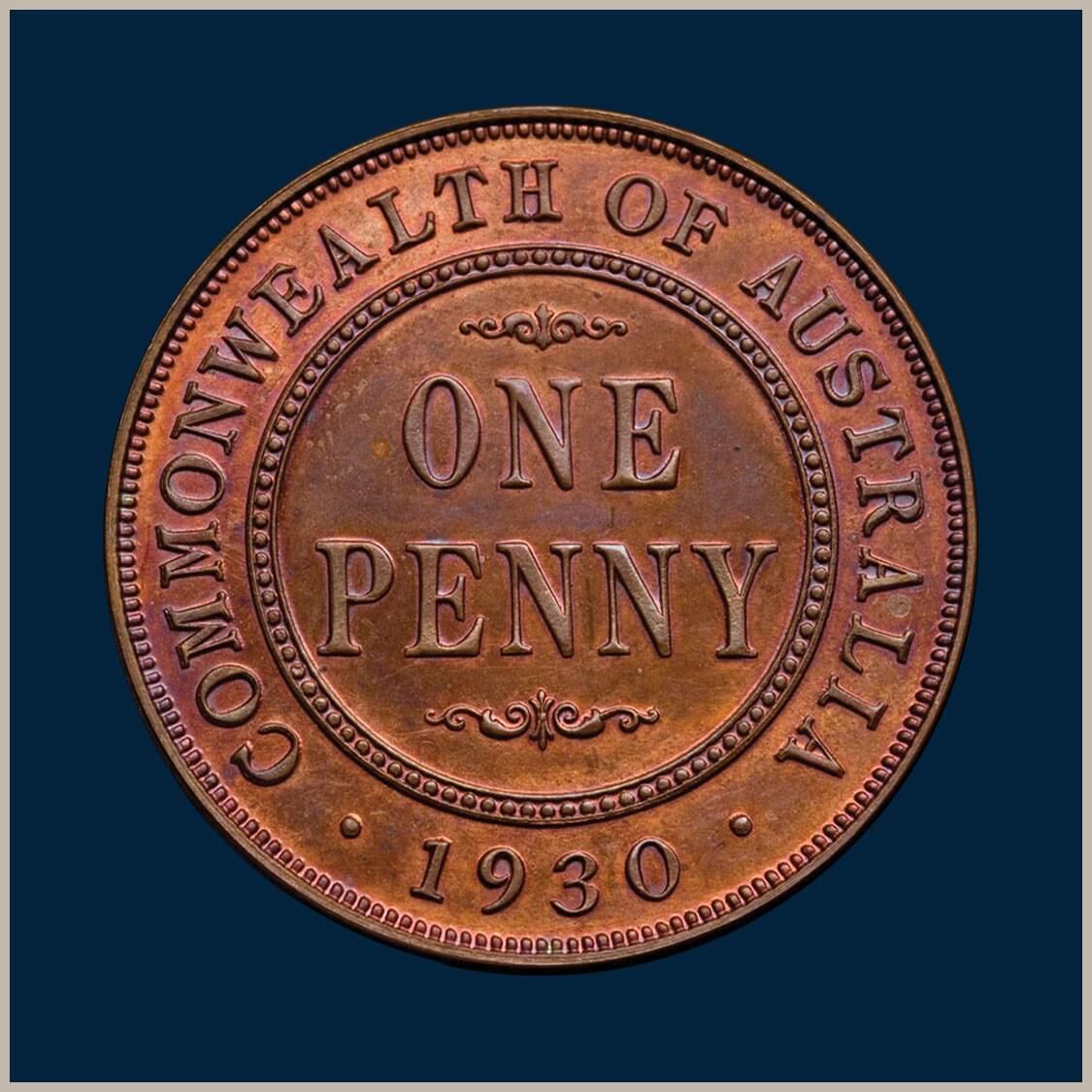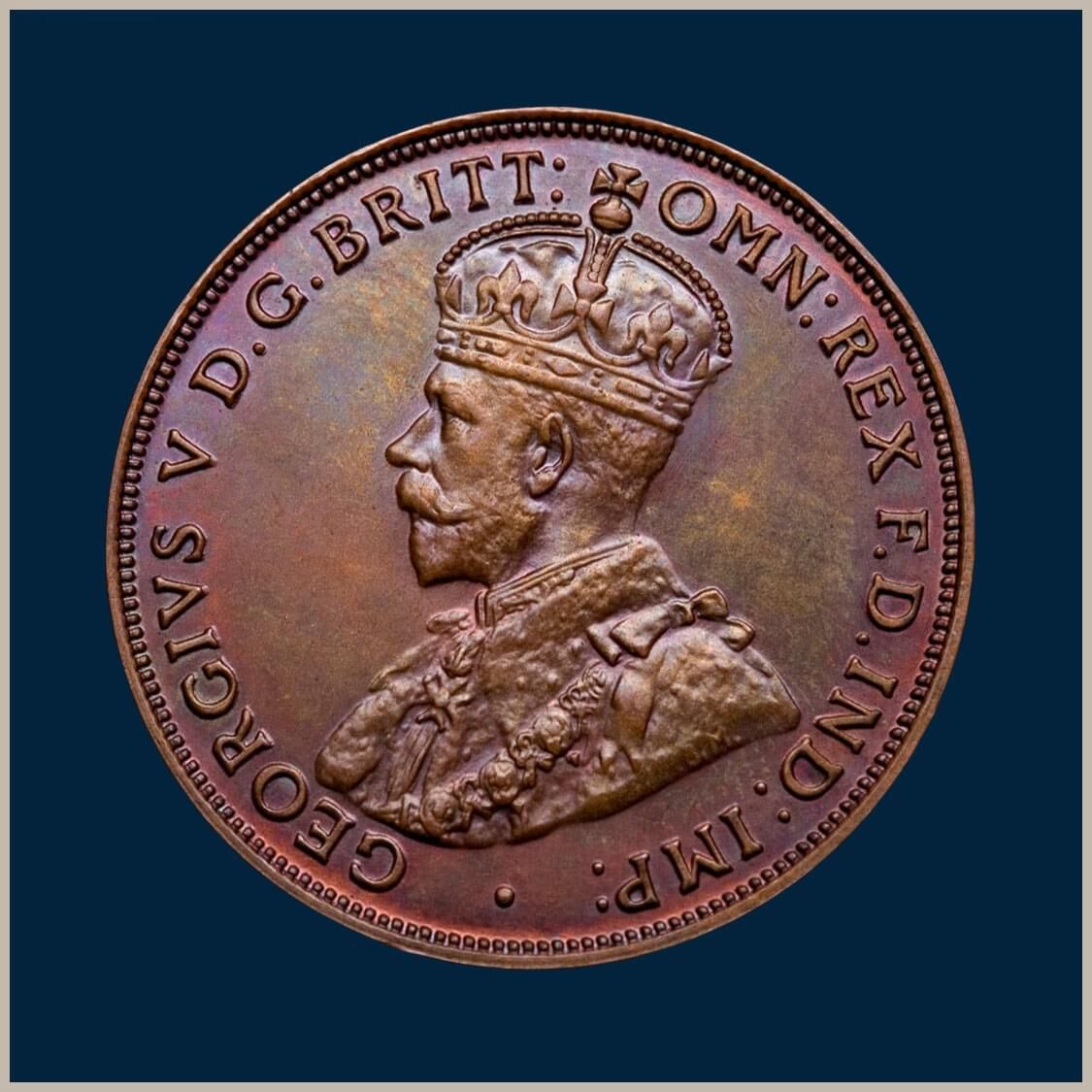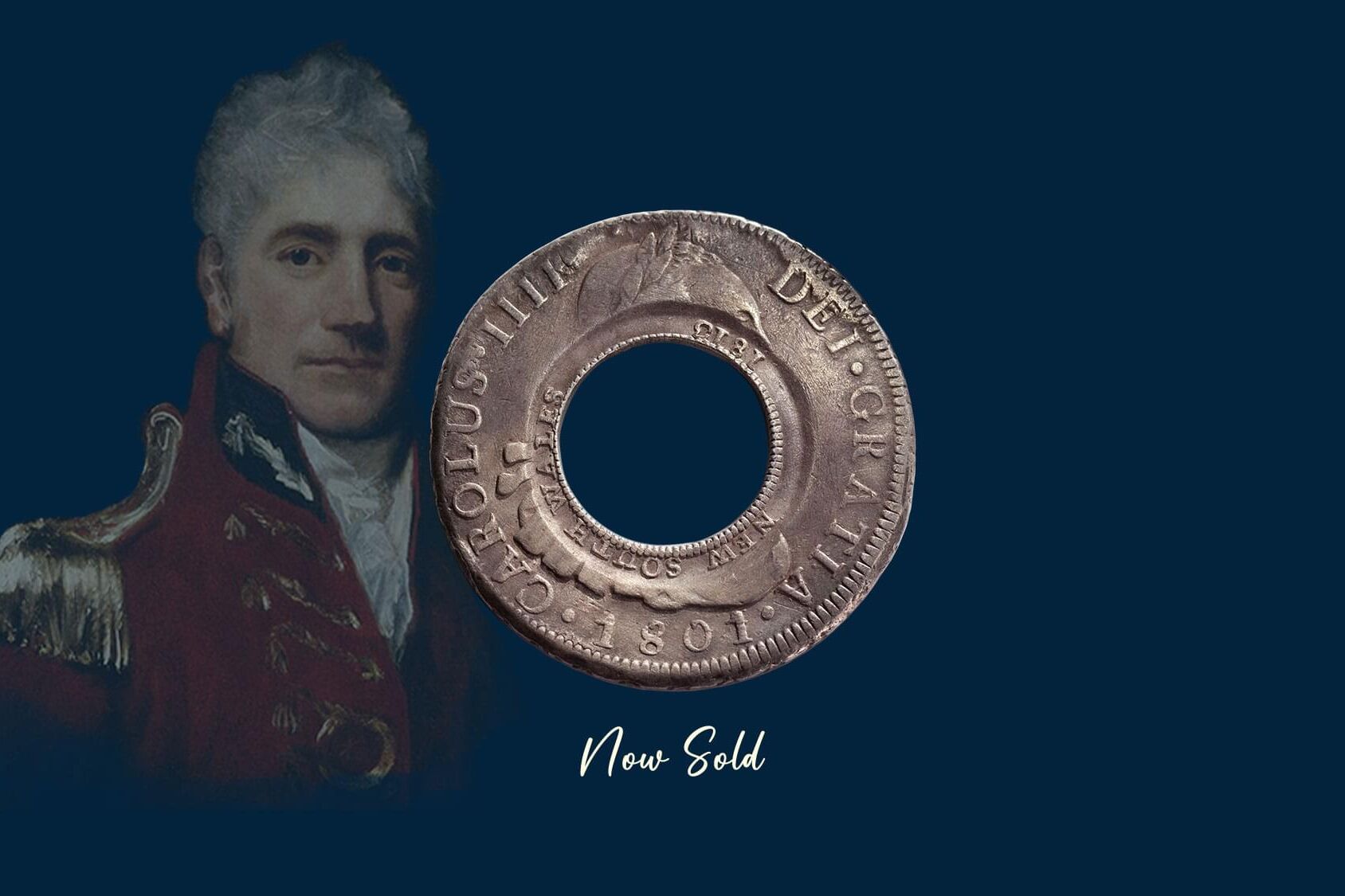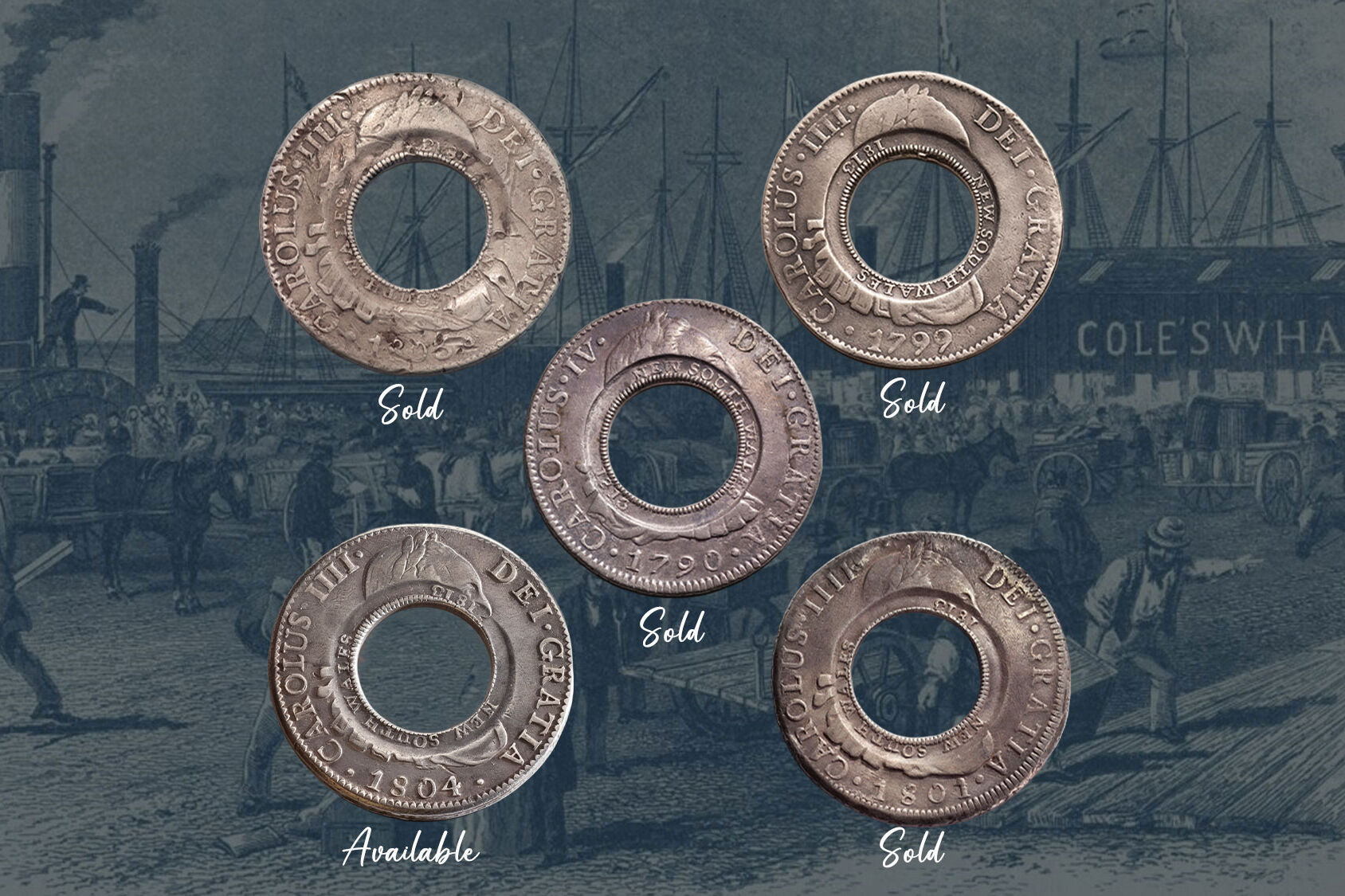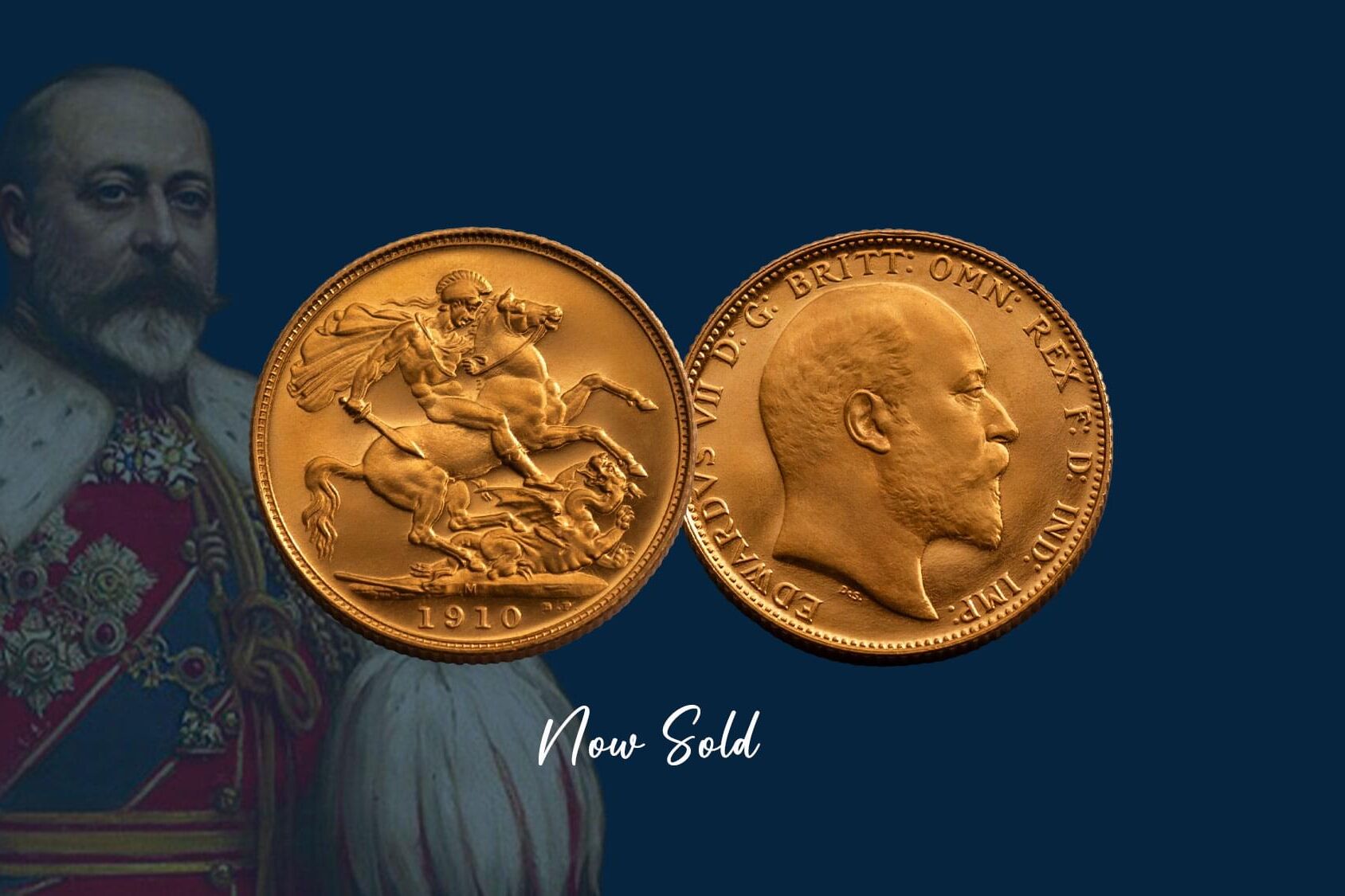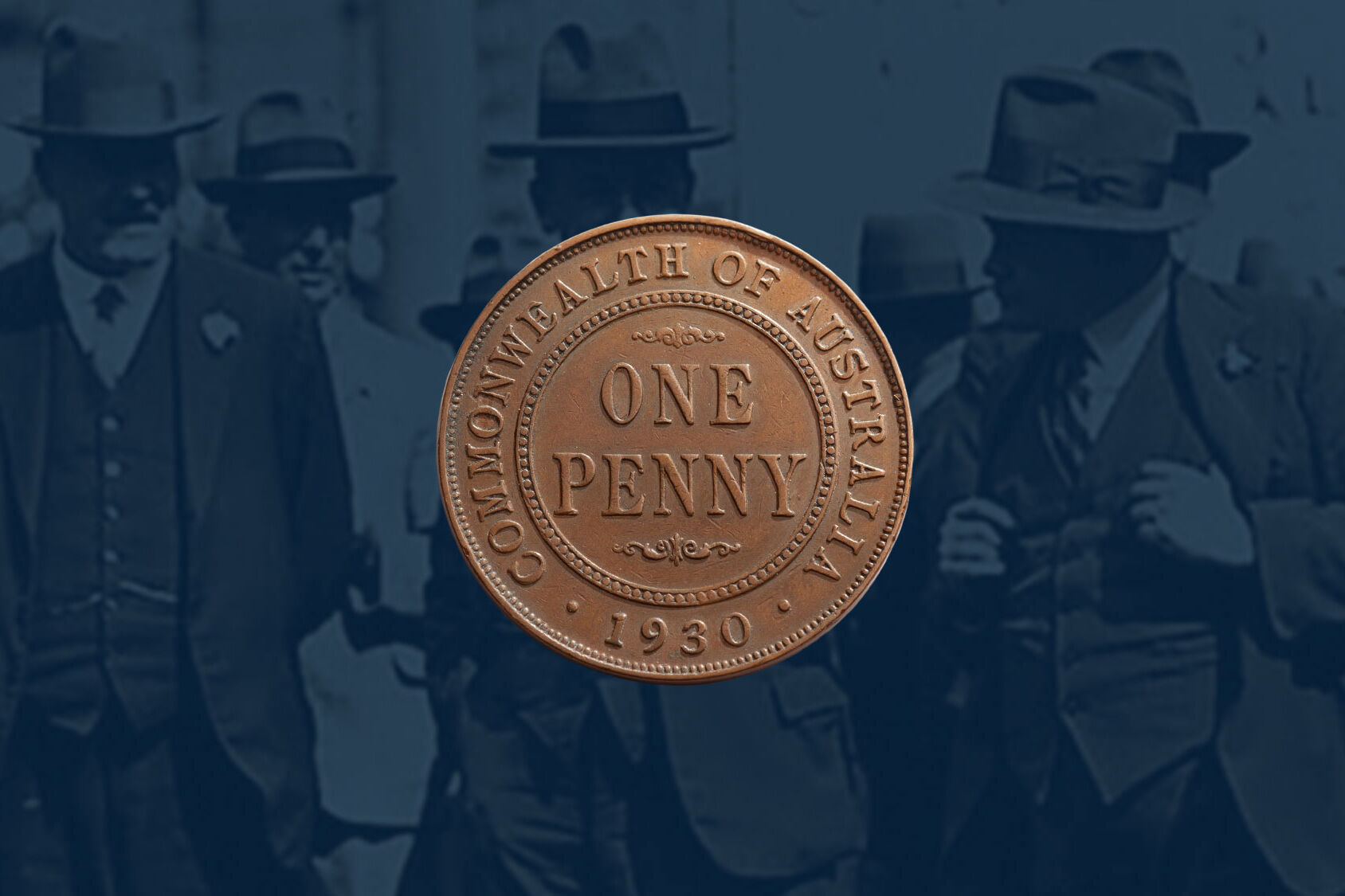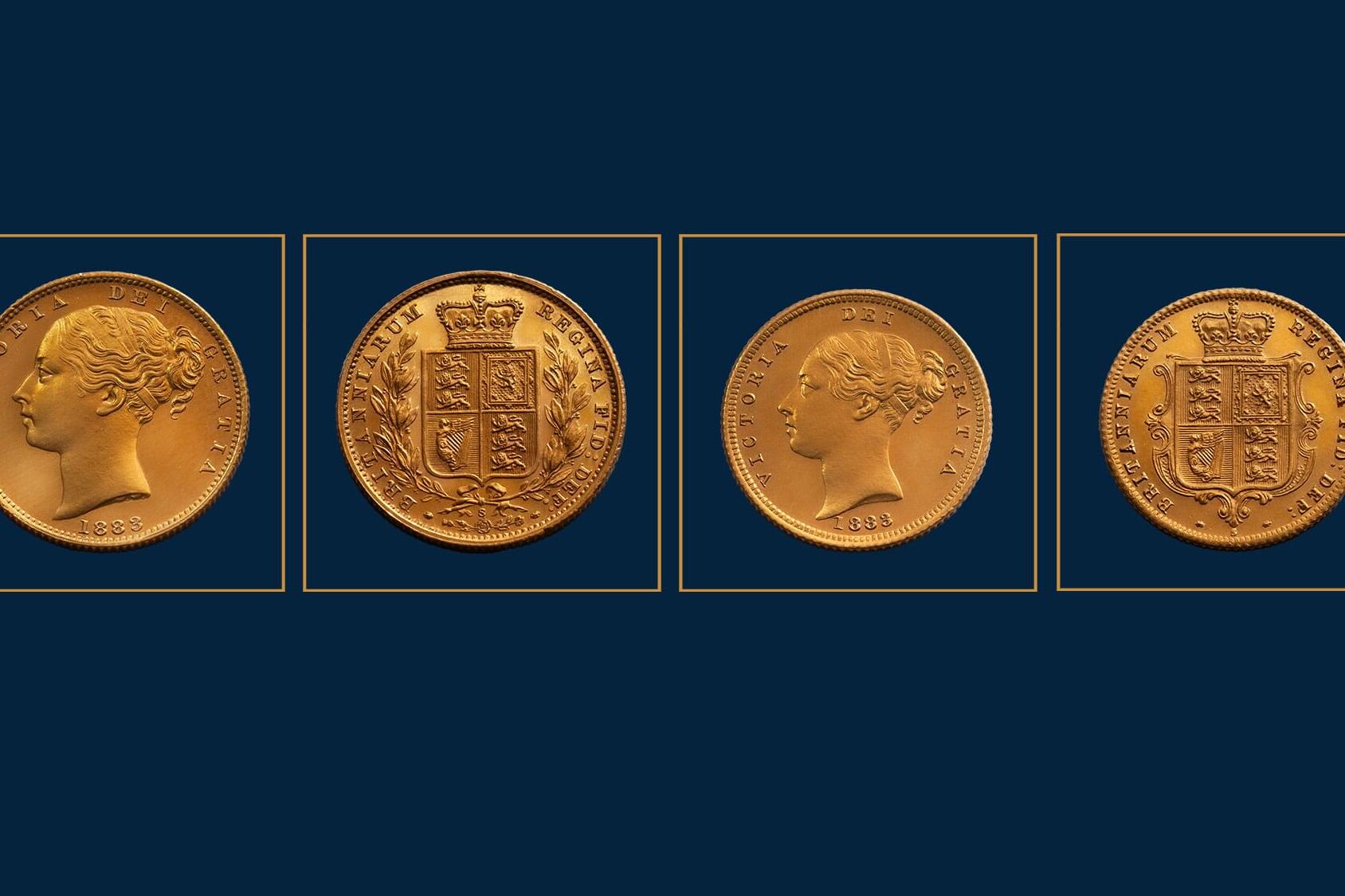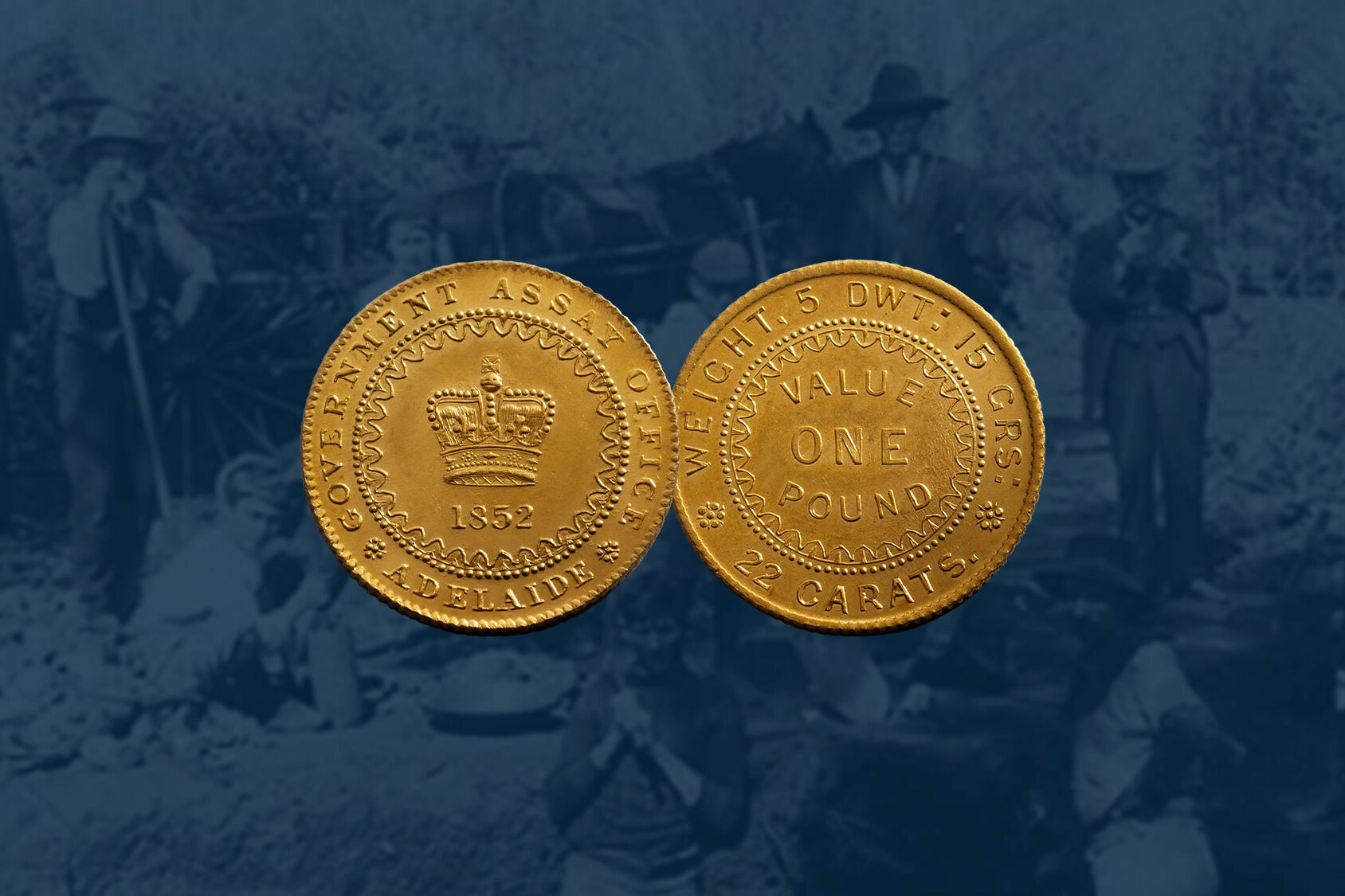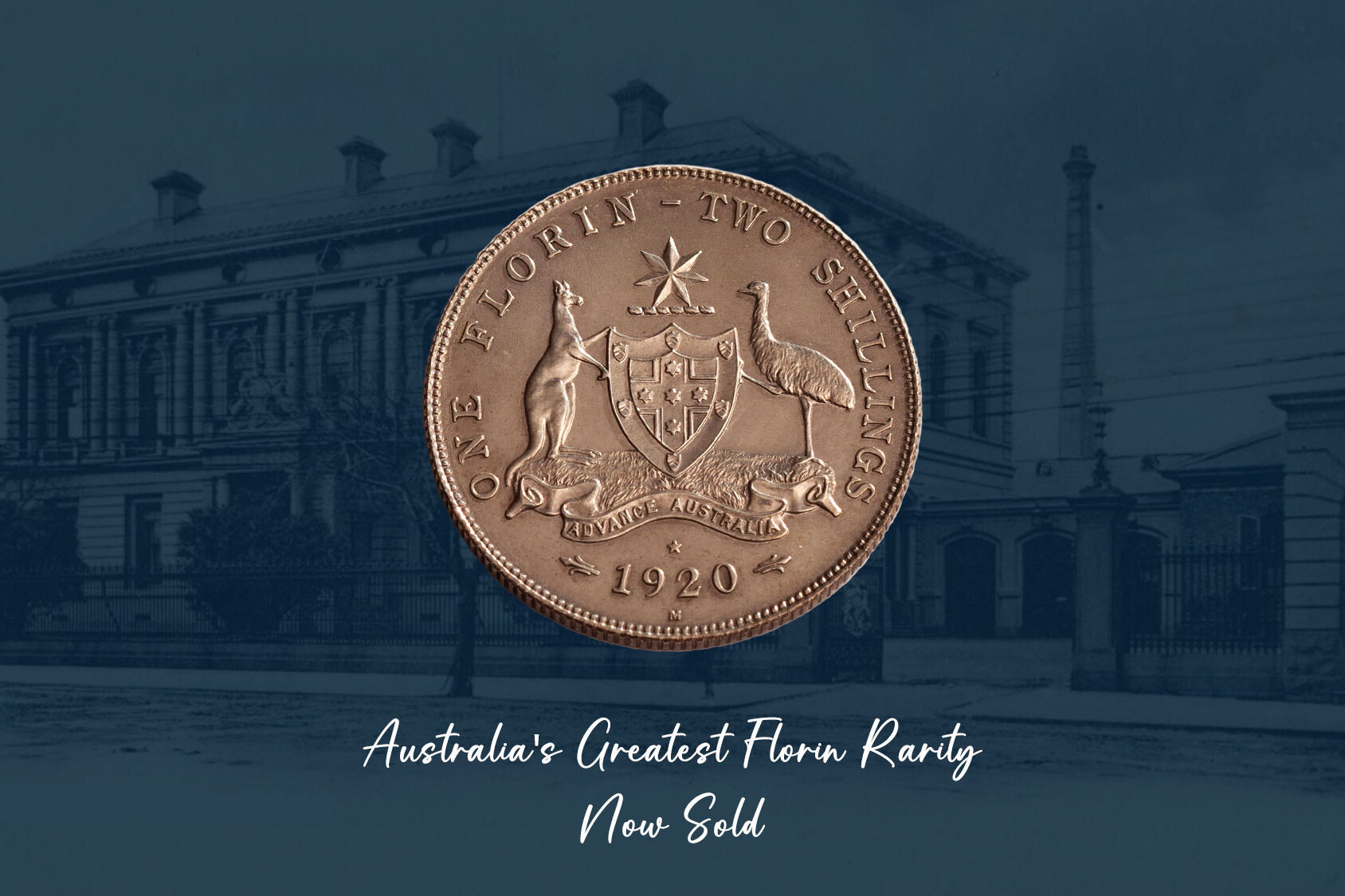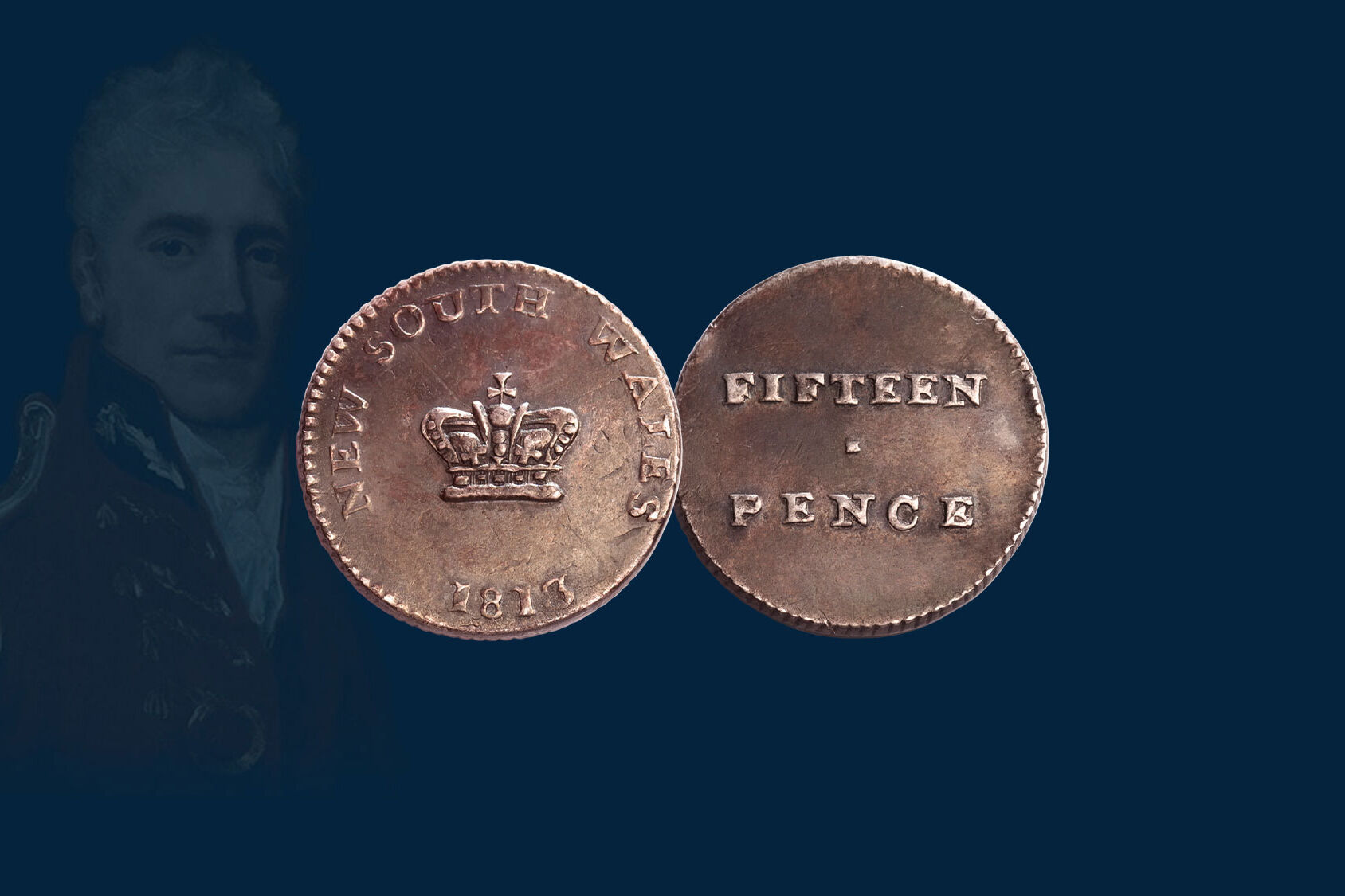The most valuable Australian penny is the Proof 1930 Penny, the most recent sale occurring in March 2019 for $1.15 million.
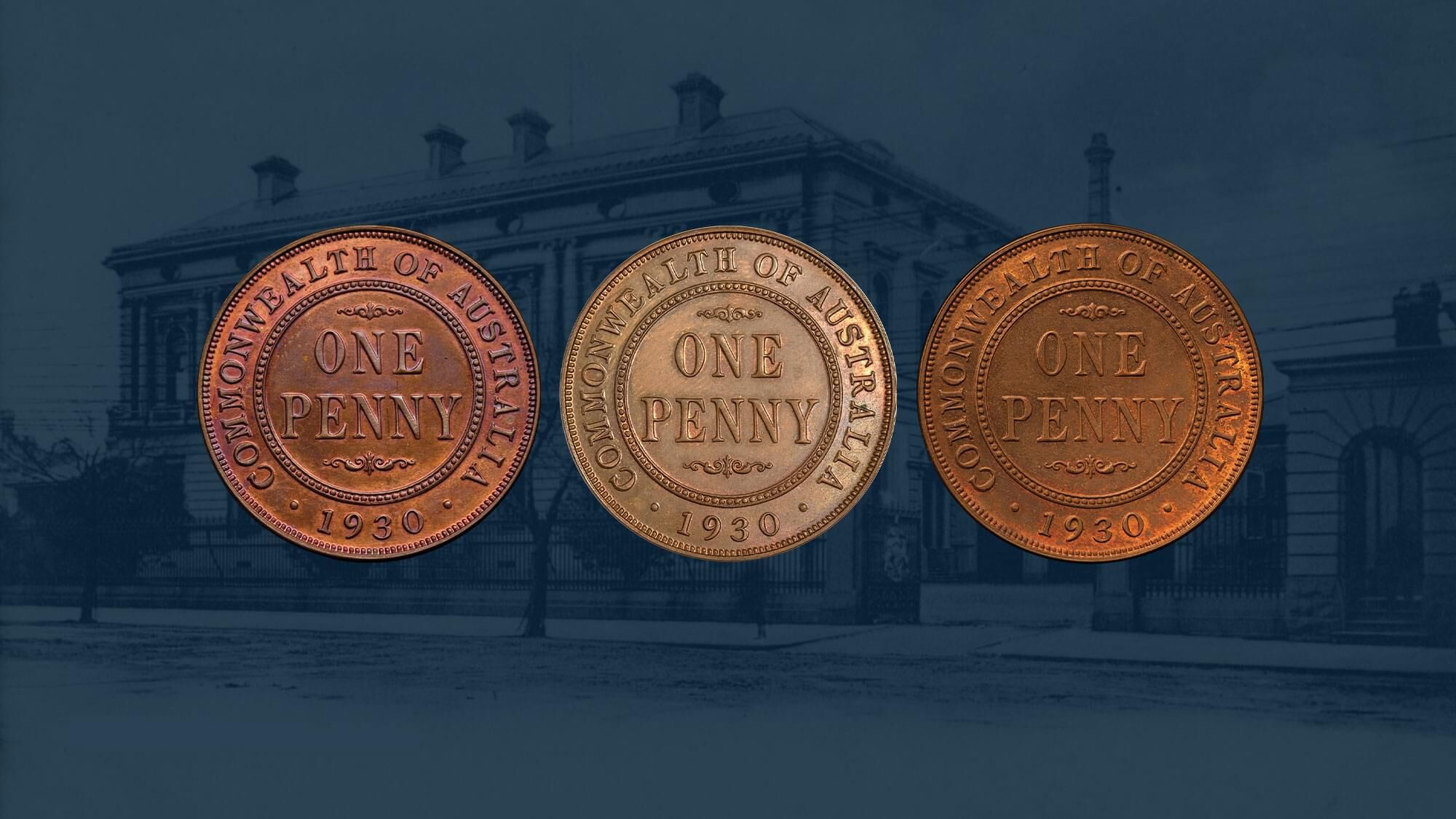

The 1930 Penny is a part of Australian folklore.
Struck during the Great Depression, the 1930 Penny is one of Australia’s most popular coins and today, enjoys a constant stream of demand unmatched by any other currency rarity.
The 1930 Penny was minted at the Melbourne Mint. And, as it so happens, it was minted by accident. Melbourne Mint records indicate that no formal request was received from Treasury to strike circulating coins.
But as we now know, a small number of 1930 Pennies were minted, by mistake. The industry estimates the mintage to be about 1500 coins.
While no formal record is held of those coins struck for circulation, the Melbourne Mint officially recorded the minting of six examples of the Proof 1930 Penny.
The 'King' of Australian coin rarities.
The Proof 1930 Penny is Australian 'numismatic' royalty. The 'King' of Australian coin rarities. It is the nation's most valuable penny, the most recent sale occurring in 2024 for for $750,000.
Where are the Proof 1930 Pennies held?
The Melbourne Mint officially recorded its striking of six Proof 1930 Pennies. So where are they today?
Three are held by private collectors, one in Melbourne with the remaining two in Sydney. Three are held in public institutions, the British Museum, the Museum of Victoria and the Art Gallery of South Australia.
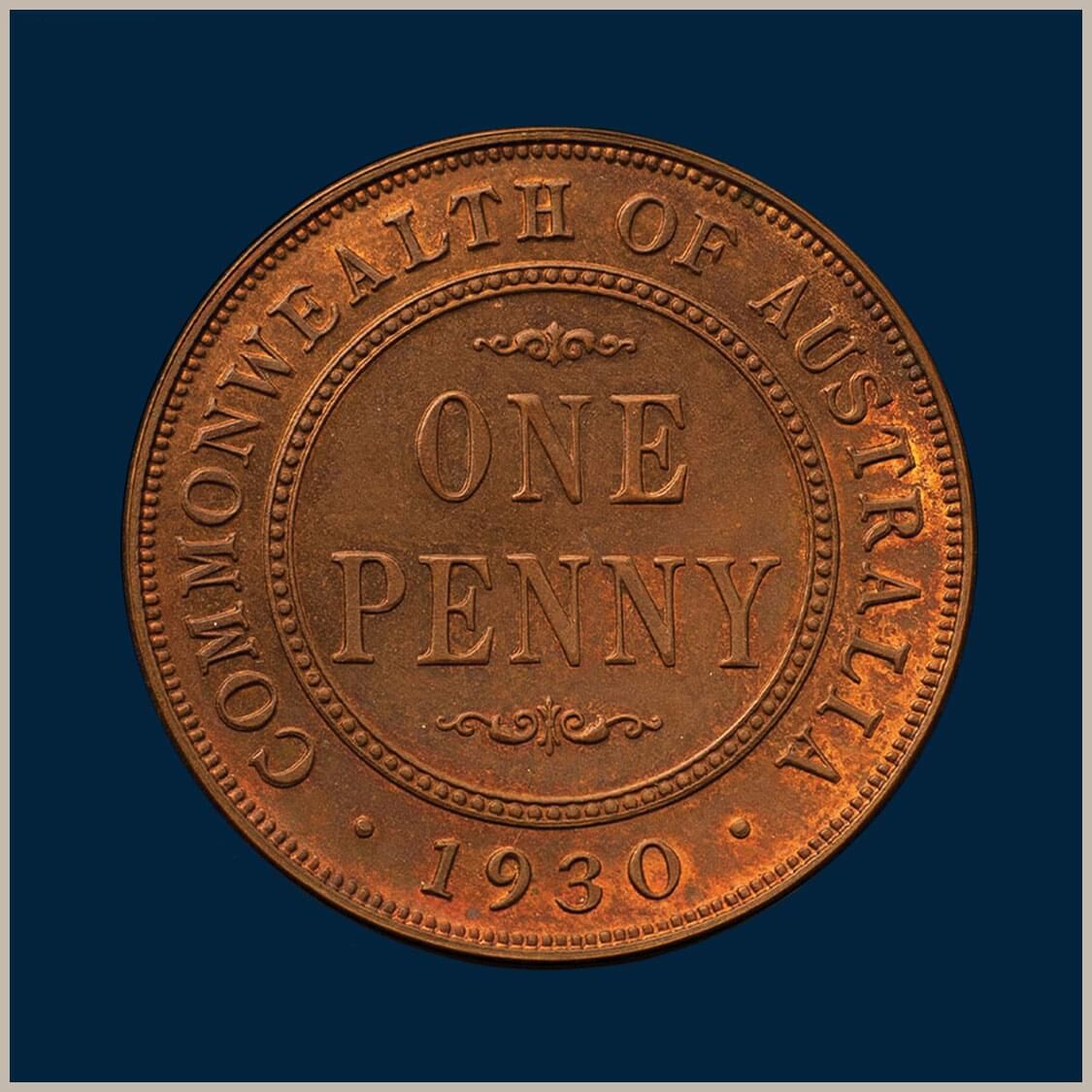
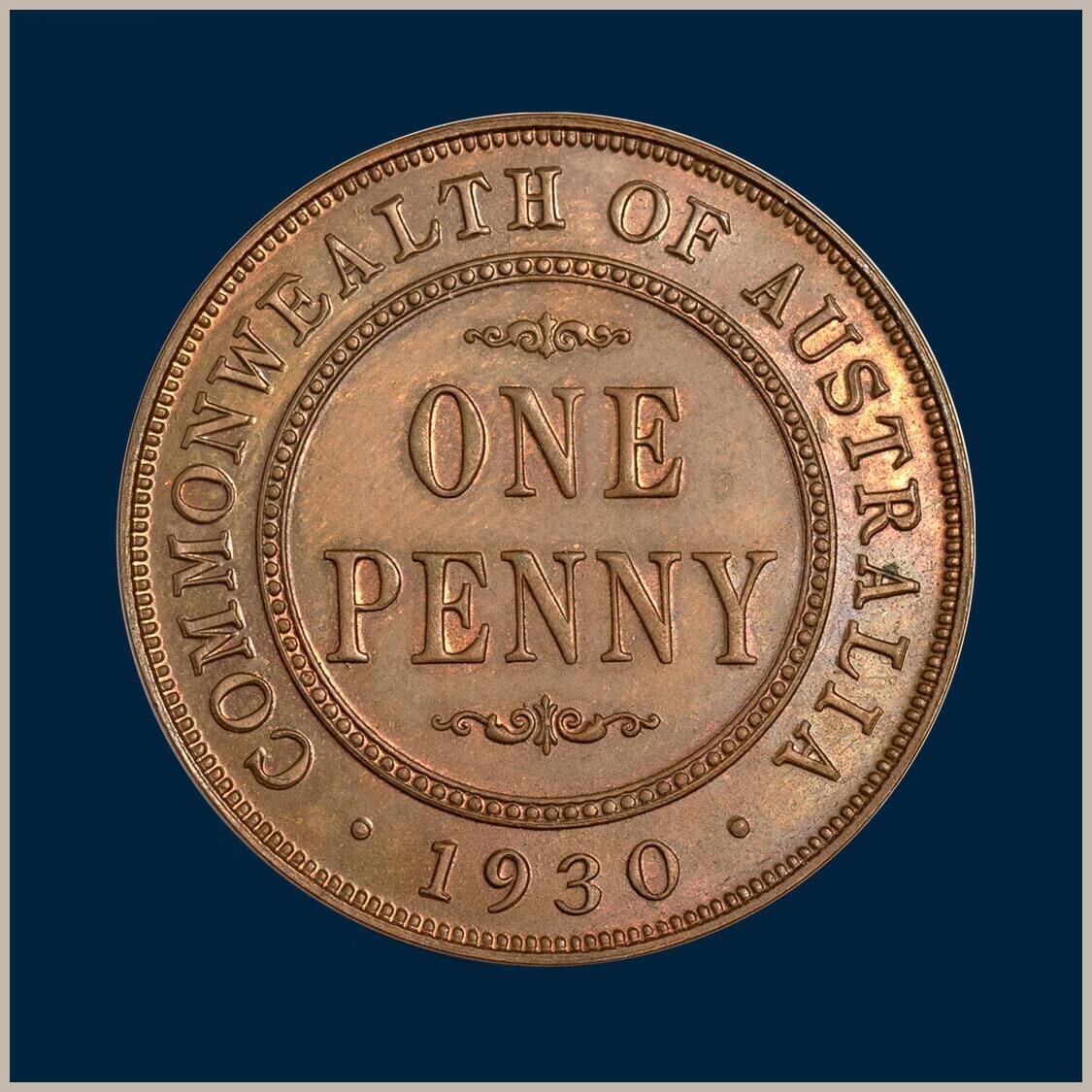
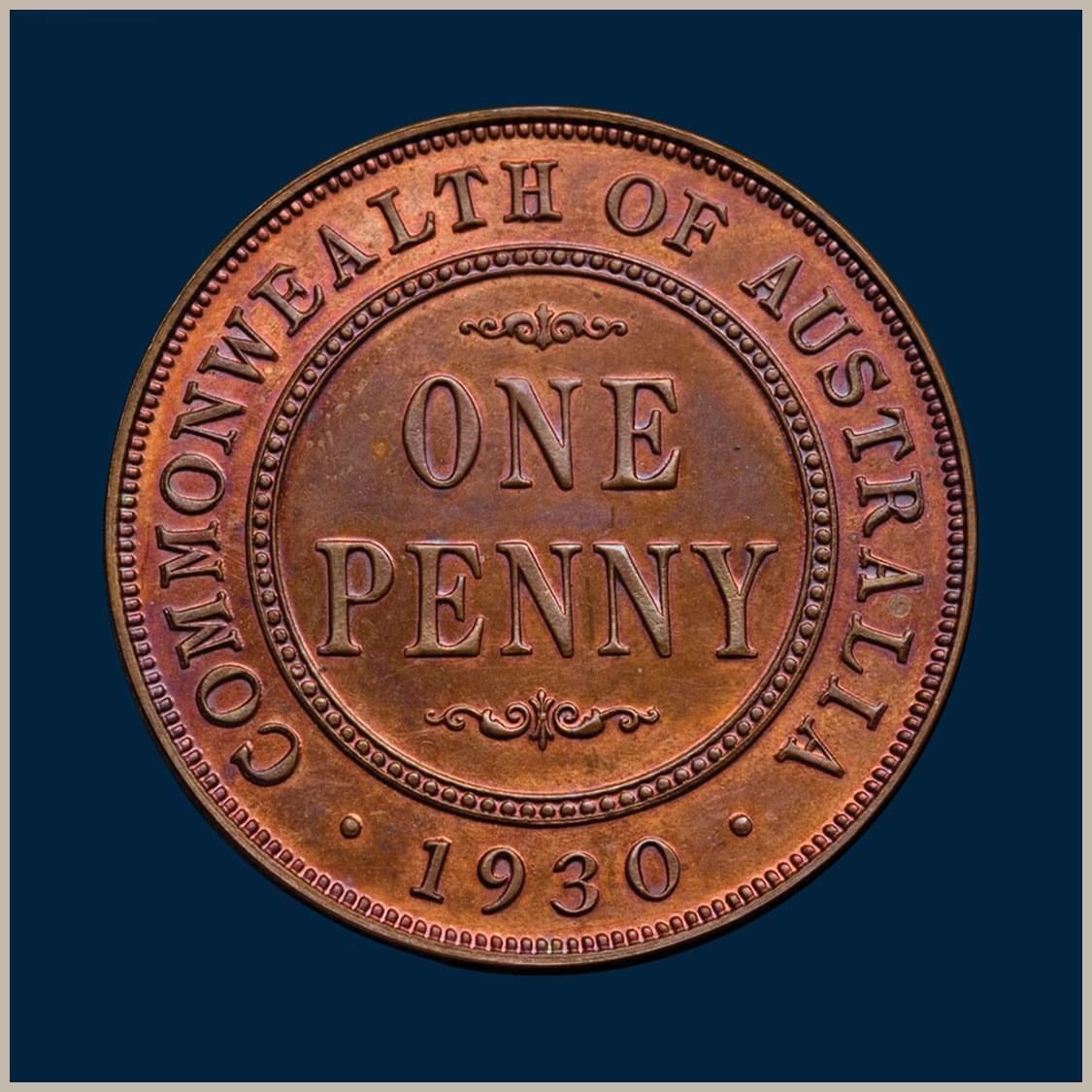
Ex British Museum
Proof 1930 Penny
Ex Madrid Collection
Proof 1930 Penny
Ex Syd Hagley
Proof 1930 Penny
The pathway to becoming the most valuable Australian Penny.
Coinworks Managing Director, Belinda Downie, celebrated the purchase and sale of her first Proof 1930 Penny in 1997.
The coin was acquired at a Melbourne public auction and later sold to the owner of the Madrid Collection of Australian Rare Coins for $147,500.
A second Proof 1930 Penny surfaced in 1999. It's background is interesting. In 1962 the British Museum received a donation of a Proof 1930 Penny. It was their second Proof '30, the Museum having been gifted one by the Melbourne Mint soon after it was struck.
Two decades later, the British Museum decided that two Proof 1930 Pennies were surplus to their requirements and exchanged one of their Proof '30s for an 1852 Cracked Die Adelaide Pound.
The exchange occurred between the British Museum and a Sydney based Auction House. The Auction House sold the Proof 1930 Penny by private treaty to a local collector for a figure reputed to be $150,000.
The British Museum Duplicate Proof 1930 Penny came onto the open market at auction in 1999.
Acting on the instructions of a Victorian buyer the coin was acquired by Coinworks for $258,750. The same coin came back into Coinworks hands in 2005, when it was sold to a Sydney family for $620,000.
This Proof 1930 Penny, the former property of the British Museum, was the most recent transaction of a Proof 1930 Penny, selling in March 2019 for $1.15 million.
Belinda Downie sold the third Proof 1930 Penny in 2011 for $1.05 million. This example had a long and exemplary history having been owned by one of the industry’s great collectors and a pioneer of the rare coin industry, Syd Hagley. In an interview conducted late in 2010, a colleague of Hagley recalled being offered the coin for just £300 in 1964. He declined the offer simply because he could not afford it at the time.
His misfortune became clear in 1974 when the coin sold at auction in Los Angeles for $16,000 as part of the famed Dr Paxman Collection. The under bidder at the time, now retired rare coin dealer Laurie Nugent, still recalls his bitter disappointment at missing out on the famous penny. He eventually acquired it in 1981.
In 1982, the Proof 1930 Penny’s star status was confirmed when Australian nursing home magnate Doug Moran bought it for a reported $100,000. For Moran, it was a matter of national pride – he declared that the coin was so important it should never leave Australian shores.
The Hagley specimen was offered at public auction in 2000, where it was picked up by a Melbourne collector for $281,750. In 2011, Coinworks was commissioned to sell the coin privately. The sale was completed in that year for $1.05 million.
The media always refers to the Proof 1930 Penny as the ‘King’ of Australian coin rarities. And with good reason. It is our most valuable coin.
But there is more to the Proof 1930 Penny than its value. The coin generates a strong emotional attachment that goes far beyond its numismatic worth.
As the nation's most valuable coin, the Proof 1930 Penny inspires a feeling of national pride in Australians from all walks of life. It is the nation's very own 'million-dollar' penny and every Australian somehow seems connected to it.
We have only seen such an intense connection with one other product. And that was the Commonwealth of Australia’s first banknote, with the serial number '000001'.
And the connection is summed up in two words. ‘National Pride’.
THE PROOF 1930 PENNY - FAQ
Why is the Proof 1930 Penny so famous?
The obvious answer to this one is its value. The Proof 1930 Penny is Australia’s million-dollar penny. Nearly everyone knows it. And is proud of the fact.
But there are two other reasons why the Proof 1930 Penny is so famous. It is a ‘penny’. And it has the date ‘1930’ on it, the year '1930' being the key.
Australians just love their pennies. It was the coin that everyone was familiar with. The round copper that you had in your pocket. The coin that, as a child, you might be given to go to the corner shop to buy a MacRobertson’s Freddo Frog.
And the 1930 Penny is the rare one! It was the coin that could bring instant wealth to those lucky to find one in their change.
Australia was socially and economically blitzed in 1930 during the Great Depression. And there was no requirement to produce pennies for circulation.
But somehow a few pennies were accidentally produced at the Melbourne Mint and released into circulation. The suggested figure a miserly fifteen hundred 1930 Pennies.
The accidental minting of the 1930 Penny was not discovered until the 1940s, dealers responding to the discovery by offering to pay up to 10/- for an example. By 1960 the 1930 Penny had become a national symbol, newspapers instrumental in creating that image with television also playing a role. By 1965, an average used 1930 Penny had more than doubled in price to £120. And by decimal currency changeover, the price had moved to £255 ($510) and the 1930 Penny had captured the imagination of collectors and non-collectors alike.
Today a well-used genuine 1930 Penny can be worth upwards of $20,000.
What is a Proof 1930 Penny and how does it differ from a ‘normal’ 1930 Penny?
Unless you are a professional numismatist, a photo of a PROOF penny and a CIRCULATING penny, might look the same because they share the same design. But there is a vast difference in the way in which they are produced. And under scrutiny, they have characteristics that make them very different.
Coins are struck in two different styles and for two distinctly different purposes.
Coins are struck so that they can be used in every-day transactions. We call it circulating currency - coins that circulate. Circulating coins are mass-produced in the millions in what can only be described as a factory environment and distributed through the banks at their face value. You could exchange a shilling at the bank, and you would be given twelve pennies in exchange. But the bank would never give you a Proof 1930 Penny.
Coins can also be struck to PROOF quality. A proof coin is a specially made coin distinguished by sharpness of detail and usually with a brilliant smooth surface. A PROOF coin is never intended to be used.
Proof coins are struck in highly controlled environments. And while today’s production of proof coins has been made faster with innovative machinery, in the twentieth century creating a proof coin was a painstakingly slow process. Coin blanks were hand-selected and were polished to achieve a smooth mirror shine.
The dies were also specially brushed to ensure the design was perfectly executed and crisp. Because the process was arduous, proof coins were always struck in limited numbers.
In the case of the Proof 1930 Penny only six coins were produced.
What is the value of a normal 1930 Penny, one that has been used?
The 1930 Penny is still to this day the glamour coin of the numismatics industry and is unrivalled for popularity, enjoying a constant stream of demand unmatched by any other numismatic rarity.
There is no doubt it is an industry phenomenon, for in a market that is quality focused it is interesting to note that the 1930 Penny is keenly sought irrespective of its grading - and growth over the mid to long term has been significant across all levels of quality.
The accidental minting of the 1930 Penny was not discovered until the 1940s, dealers responding to the discovery by offering to pay up to 10/- for an example.
The 1930 Penny was selling for £50 in the late 1950s. By 1960 the 1930 Penny had become a national symbol, newspapers instrumental in creating that image with television also playing a role.
By 1988, the year Australia celebrated its Bicentenary, the 1930 Penny had reached $6000. The turn of the century saw 1930 Penny prices move to $13,000.
Today an average, well used, 1930 Penny will fetch upwards of $20,000, depending on how well it has been used. (A fact that only a professional can assess.) The highest quality 1930 Penny is graded at About Uncirculated and is conservatively valued at $300,000.
I think I have a Proof 1930 Penny. Can you please help me out here?
The Melbourne Mint records the production of only six Proof 1930 Pennies. And all are accounted for.
We know that three coins are held by private collectors, one in Melbourne with the remaining two in Sydney.
The three publicly held specimens are in the British Museum, the Museum of Victoria and the Art Gallery of South Australia.
Shop Coinworks
© Copyright: Coinworks
